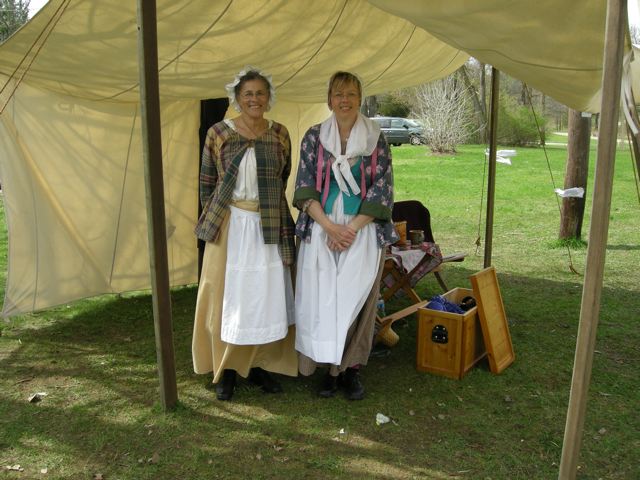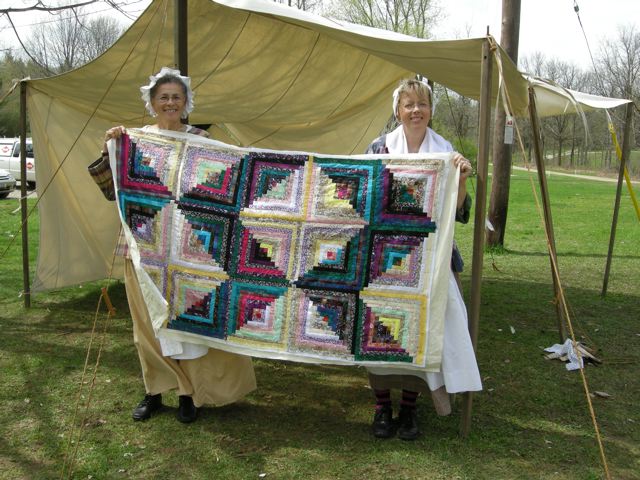Loyalist Participation in Events
Battle of Longwoods Reenactment 2009
On Friday, May 1st more than 1,300 grade seven and eight students attended Education Day at the reenactment of the Battle of Longwoods (1814) near Delaware, Ontario. Carol Talbot and Jan Pennycook UE represented the London and Western Ontario Branch and brought the Loyalist presence and importance in the history of our area to life. Drawing on the experiences of Anna, wife of John Conrad Sills, this first person interpretation talked about leaving a successful homestead on the Susquehanna, enlisting sons with the Kings Royal Regiment of New York (at age 10 the youngest was a drummer boy), spending a difficult winter in the camp at Machiche, Quebec -- true facts to this point-- and finally getting land in Ontario, only to have the Americans come marching across the river at Detroit now some thirty years later. (Sadly, the 'real' Anna did not survive the camp at Machiche, and in reality, John Conrad Sills settled in Quinte.)
It was also at this time that Andrew Westbrook, son of Loyalist Anthony Westbrook, gained a certain notoriety as a traitor and a spy for the Americans in the Delaware area and became the subject of a book by Major John Richardson who is argued to be the first Canadian novelist (see Westbrook, The Outlaw; or The Avenging Wolf available through Davus Publishing). Funny how those Americans always think it's just a matter of marching: there's a lot to be said for "Peace, Order and Good Government"!
Within this story, Carol spoke about the Black experience, from the promise of freedom for slaves who took up arms on behalf of the British, to Caldwell's Rangers, a company of mostly "men of colour" (Stott, 2001, p. 120) who were part of the Battle of Longwoods. Governor Simcoe frowned on slave owning and Loyalists who arrived with slaves were often pressured to free them. The Upper Canada Act of 1793 freed all slaves at age 25, and the children of such slaves were born free; however, American bounty hunters were still a problem. The log cabin quilt in the picture was a signal to runaway slaves when it was hung out that this was a 'safe' house. All in all, it was a wonderful opportunity to promote an appreciation for our own unique Canadian history.

Carol Talbot and Jan Pennycook UE explained the plight of the Loyalists who overwintered at Machiche and then came on to Ontario.

Carol Talbot and Jan Pennycook UE explained to students what a log cabin quilt signified to escaping black slaves.



